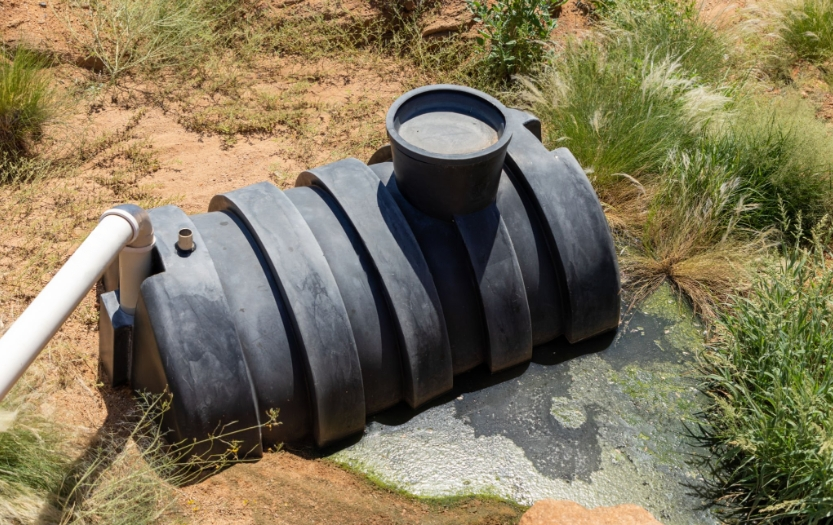Uncategorized
Understanding and Maintaining Septic Systems; A Comprehensive Guide
Septic systems might be unfamiliar to few of us but they hold significant importance for households that rely on them.
If you’ve always resided in a house connected to the sewage line chances are you may not be familiar with the concept of tanks or what they entail.
In this blog post we will provide an explanation of what septic tanks are and how they function.
What Exactly is a Septic Tank?
A septic tank is a container used for treating wastewater through decomposition and drainage processes.
To treat wastewater from household plumbing (such as bathrooms, kitchen drains and laundry) septic tanks utilize processes and proven technology.
The design of a tank system is relatively straightforward. It consists of a watertight container typically made from materials like fiberglass, plastic or concrete.
In the tank, normally there are compartments and a T-shaped outlet that stops sludge and scum from exiting the tank and going into the drain field area.
Septic tank systems fall under the category of sewage facilities (OSSF) and provide only basic treatment capabilities.
If you live in a house with drainage or, without access to the sewage network septic tanks provide a safe way to dispose of wastewater.
They function by collecting both waste and water in an tank and are primarily used in rural areas.
Septic tanks are typically installed underground 50 meters away from the house. They usually consist of two compartments and one tank that receives wastewater through a pipe.
In areas, where homes are connected to the city sewage system septic tanks are not necessary as water companies manage the wastewater. It’s crucial to note that septic tanks differ from tanks, which serve as alternatives.
Having a system allows homeowners to use water facilities normally. Additionally those with tanks have a responsibility to ensure that their tank does not negatively impact the local environment. For instance if the drain field becomes overwhelmed with liquid it can lead to flooding or backups, in toilets and sinks.
How often should I schedule tank maintenance?
Taking care of your system starts with regular emptying. While you can hire professionals, for this task it’s crucial to have someone come and empty it when it starts reaching its capacity; otherwise you might encounter issues.
Ideally a professional inspection of your household system should be conducted every three years. During this inspection the expert can assess if pumping is necessary and advise on the timing.
In some cases they may proceed with pumping or suggest a return visit in a year or two. Additionally it’s essential to have any components or systems inspected annually to ensure safety and identify any parts that may require replacement.
Although you may not prefer checking these parameters yourself, a general guideline is as follows; if the scum layer is within six inches from the bottom outlet or if the sludge layer is within 12 inches, from the outlets top then it’s time to schedule a tank emptying.
Remember to keep a record each inspection – including the one done by yourself.
Please make sure to document the levels and any pertinent details, for the person who checks it. This way you can avoid the hassle of having it checked again soon.
Understanding the Importance of Septic Tank Treatment
The septic tank plays a role in the whole system as it acts as a buried container. Its purpose is to hold and separate solids from wastewater. As time passes solid waste accumulates at the bottom of the tank while liquid effluent is released into the drain field for treatment.
Regular maintenance of your tank is vital to prevent sludge buildup and maintain optimal efficiency. Typically pumping should be done every 3 to 5 years to remove accumulated solids and prevent any clogs in the system.
Additionally using approved tank additives can promote activity and assist in breaking down organic matter. However always ensure that you select additives authorized for use in systems and follow manufacturer guidelines.
Types of Septic System Treatments
Let’s discuss some of the common septic tanks treatment methods
Cesspools
For those seeking an on site sewage disposal option compared to septic systems cesspools provide an alternative solution. They consist of pits or underground containers that collect and retain wastewater while permitting liquids to permeate into the surrounding soil while holding solids, within the pit.
Although less common, in times cesspools can still be found in some areas. It is crucial to maintain them to prevent overflow and contamination of groundwater. Key steps include conducting inspections performing pumping and ensuring that only appropriate materials (such as toilet waste and wastewater) are introduced into the cesspool.
Mound Systems
Addressing landscapes or areas with water tables and slow percolating soil mound systems offer a suitable solution. These systems involve constructing a raised mound of sand and gravel above ground level to elevate the drain field. Wastewater is evenly distributed through the mound allowing for treatment as it gradually filters through the soil.
To maintain a mound system effectively it is important to ensure distribution of effluent and prevent compaction of the mound. Regular inspections should be conducted on pumps, pipes and the overall mound structure to avoid any system failures.
Aerator Systems
Aerator systems are systems designed to enhance wastewater treatment. Also known as aerobic treatment units (ATUs) these systems introduce air into the tank to promote aerobic bacterial activity. This leads to decomposition of organic matter.
Aerator systems prove beneficial in areas, with challenging soil conditions or where stricter treatment standards are implied. Their regular maintenance involves conducting inspections and servicing of the aerator unit to ensure that it operates correctly.
Leaching Lines and Lateral Lines
Leaching lines, also known as leach fields or drain fields, along with lines are components of septic systems responsible for dispersing effluent from the septic tank into the soil. These systems allow for filtration and purification processes to take place before the effluent returns to the groundwater.
It is crucial to inspect these lines in order to identify any indications of clogging or failure. Taking measures like avoiding planting rooted trees or constructing heavy structures over the drain field helps maintain the efficiency of the system.
Distribution Box
The distribution box plays a role in ensuring that effluent is evenly distributed to both leaching and lines. Its purpose is to prevent sections of the drain field from being overloaded.
Regularly inspecting the distribution box is vital. Any signs of damage or blockage should be promptly addressed. Maintaining elevation and keeping the box free from debris are steps in maintaining optimal functionality, for your system.
Tips for Septic System Maintenance
Here are some extra tips to keep your system in shape;
- Be mindful of what you flush down the toilet or pour down the drain. Avoid using chemicals as they can disrupt the balance of bacteria, in the tank.
- Conserving water is important to prevent overloading the system. Use water appliances and try to spread out your water usage throughout the day.
- Regular inspections with a professional can help identify issues on saving you from costly repairs later.
- Take care of your drain field by avoiding traffic, construction activities or planting rooted plants over it. Compacting the soil can reduce the efficiency of your system.
Conclusion;
Septic systems play a role in managing household wastewater so it’s essential to understand their components and proper maintenance practices for long term functionality.
Whether you have a tank, a mound system, or an advanced aerator system, following these tips will protect the environment and safeguard your investment in this vital system.
By staying informed and proactive, about maintenance, you’ll enjoy trouble wastewater management for years to come.
Got any Question? Reach out to us

